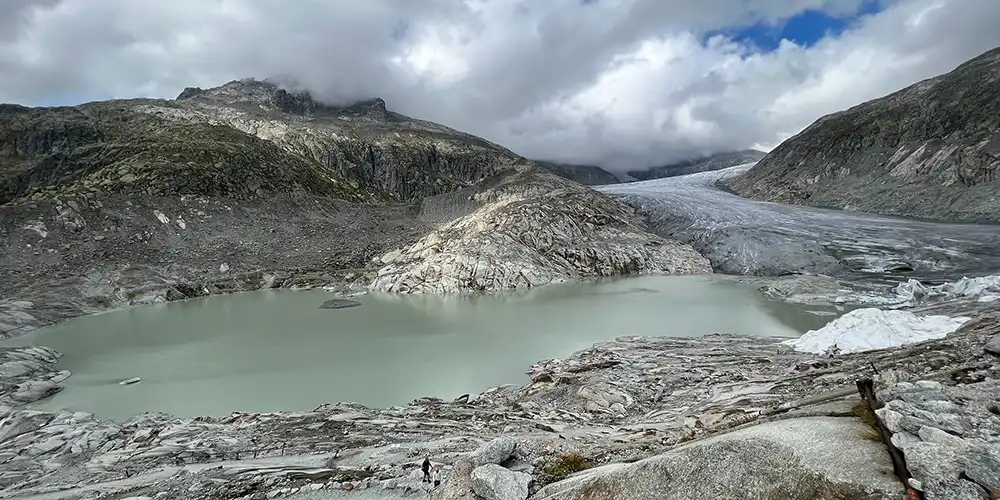The Swiss glaciers are melting faster and faster. They have experienced the second worst summer for their existence since measurements began. In the past two years, 10 percent of the ice volume in the Swiss Alps has disappeared. In the future, the melting will even accelerate.
Another year of extremes is taking its toll on the glaciers. In the last 12 months, around 4 percent of the ice volume in the Swiss Alps has melted. The melt was strongest in the southern Valais Alps and the Eastern Alps.
Massive glacier collapse of the Turtmann glacier (2020)
Dr. David Volken, meteorologist and climate expert: “Overall, glacier melting continues to increase, but the acceleration of melting in the Alps is enormous. If melting continues at this rate, the glaciers will be gone before we have built any reservoirs. The loss of fresh water that is otherwise stored in the ice of the glaciers would therefore be unstoppable.
Glacier melting continues to increase overall, but the acceleration of melting in the Alps is enormous.
Dr. David Volken, meteorologist and climate expert
At the Allalin Glacier above Saas-Fee in Valais, glacier melt was almost as severe as in the record year of 2022. Even at an altitude of 3200 meters, the glacier ice decreased in thickness by 3,5 meters. There should actually still be snow from last winter at this height in September.”
Up to 3 meters of ice thickness loss on the Gries Glacier
But the Allalin Glacier is not alone with these great losses. ETH Zurich researchers also measured average ice thickness losses of up to 3 meters at the Gries Glacier in the Nufenen area, at the Ghiacciaio del Basodino in the upper Maggia Valley and at Vadret Pers in the Engadine. The Gries glacier was already completely free of snow in July and was therefore exposed to the sun without any protection.
The situation between the Bernese Oberland and Valais is somewhat less dramatic, as there was a little more snow there in winter. Nevertheless, the loss of over 2 meters in average ice thickness at the Great Aletsch Glacier and at the Glacier de la Plaine Morte above Montana is very high.

Causes of glacier melting
There are several reasons for the renewed sharp retreat of the Swiss glaciers. On the one hand, the amount of snow fell last winter was well below average. The very warm June caused the snow on the glacier to melt very quickly. The heat waves at the end of August and beginning of September, with a zero degree limit of over 5000 meters in some cases, led to very high melting rates.
In addition, the surfaces of glaciers are becoming increasingly dirtier from year to year. The darker surface reflects the incident solar radiation more poorly. This means more energy is available for ice melting.
Since, according to climate models, summers are becoming warmer and the snowfall limit continues to rise, the melting of glaciers will accelerate in the coming years. By the middle of the century, many glaciers will disappear completely and even large ice streams such as the Rhone or Morteratsch glacier will be almost unrecognizable.
That might interest you
- Another rock and glacier demolition on the Sustenhorn
- Austria's alpine protection associations demand immediate project stop of the Pitztal-Ötztal glacier
- Dani Arnold climbs in the depths of a glacier
- These 5 multi-pitch routes are suitable for Ecopoint climbing
Do you like our climbing magazine? When launching the climbing magazine Lacrux, we decided not to introduce a paywall because we want to provide as many like-minded people as possible with news from the climbing scene.
In order to be more independent of advertising revenue in the future and to provide you with even more and better content, we need your support.
Therefore: Help and support our magazine with a small contribution. Naturally you benefit multiple times. How? You will find out here.
+ + +
Credits: Cover photo Dr. David Volken / weather Online

